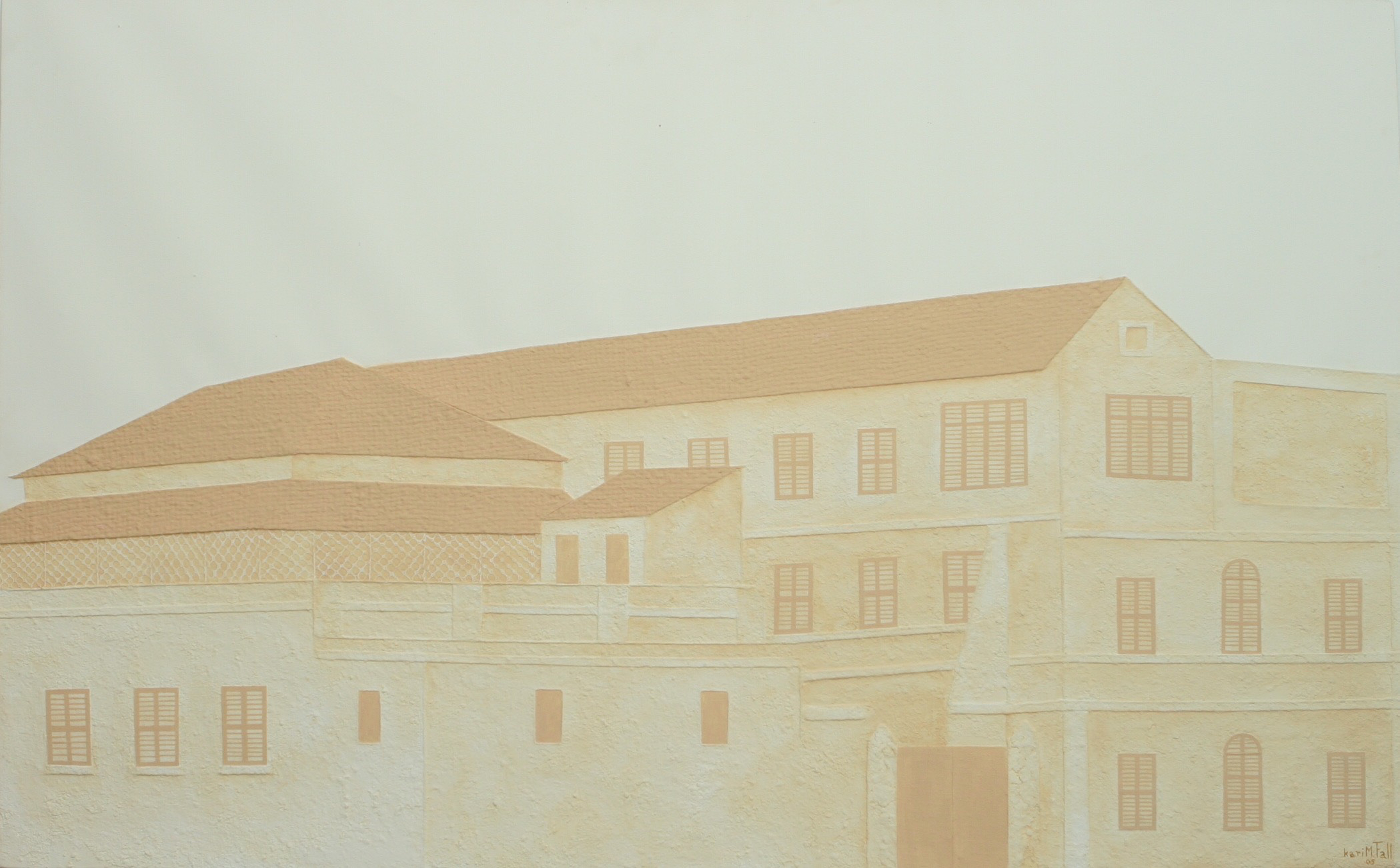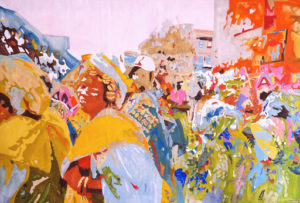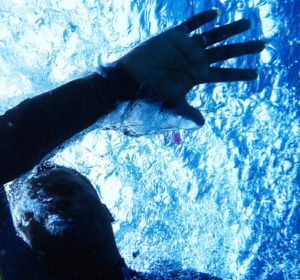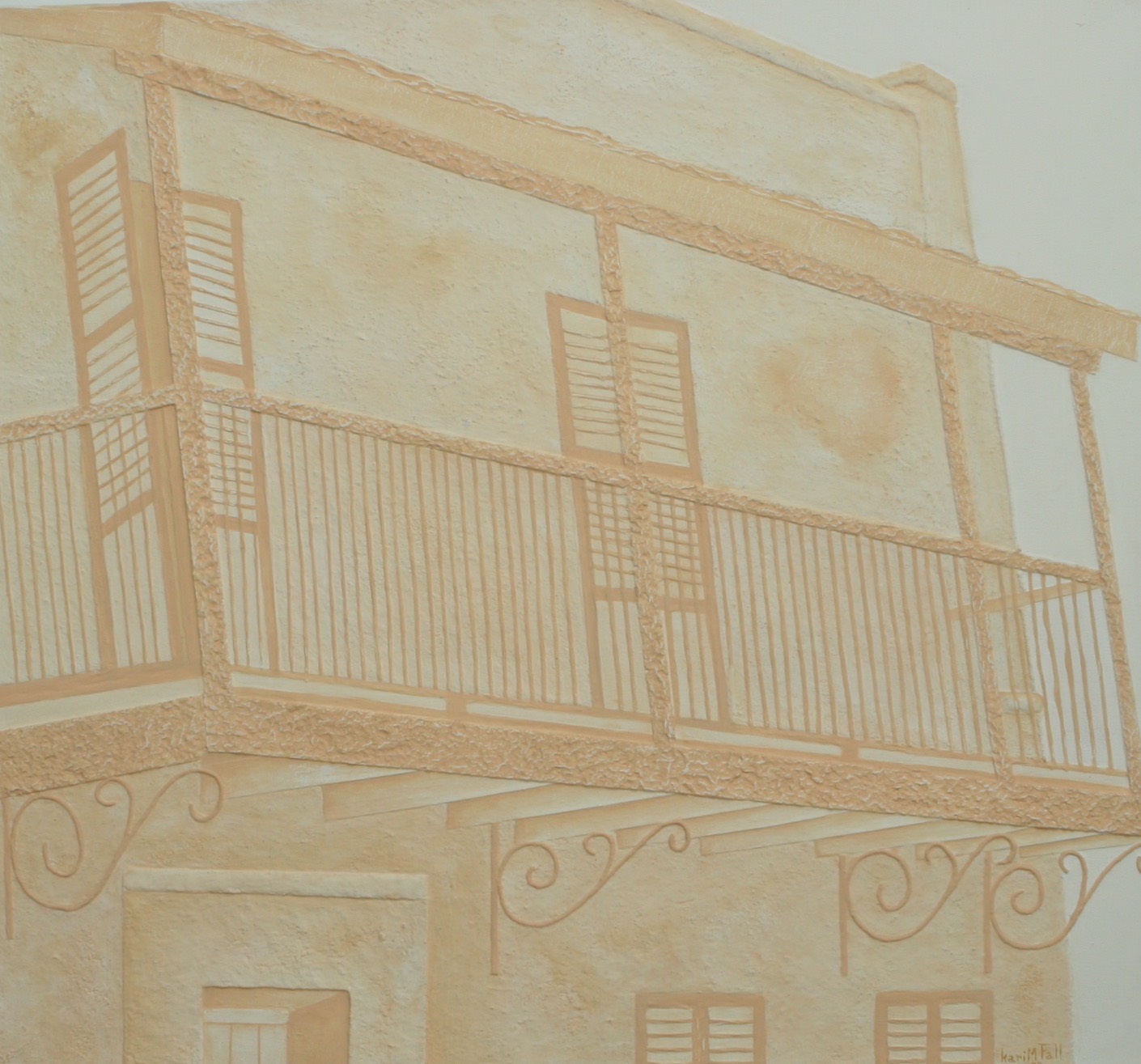Group exhibition of contemporary Senegalese art to inaugurate Barrett Barrera Projects’ new office and project space
Barrett Barrera Projects and Blackpuffin are pleased to present Saint Louis to St. Louis: The City on the River meets River City curated by Modou Dieng, a major exhibition of contemporary art from Saint Louis, Senegal in St. Louis, MO and the first exhibition at Barrett Barrera Projects’ new state-of-the-art project space. A show celebrating sister cities across the great Atlantic Ocean and global artistic exchange of diaspora and hybridity, featuring Laylah Amatullah Barrayn, Serigne Mbaye Camara, Rama Diaw, Modou Dieng, Abdoukarim Fall, Manel Ndoye, Jarmo Pikkujamsa, Djibril Sy, Adama Sylla, Sara de la Villejegu and Malick Welli.
Please join us for the opening reception on October 17 from 5 p.m. to 8 p.m. at Barrett Barrera Projects (4739 McPherson Ave.), which will include a presentation by fashion designer Rama Diaw. There will also be a panel discussion on October 19 at 11 a.m. with curator Modou Dieng, Barrett Barrera Projects President Susan Barrett and Renée Brummel Franklin, Director of Audience Development at Saint Louis Art Museum and Missouri State Coordinator for Sister Cities International.

Abdou Karim Fall, “Lycée Omar Foutiyou Tall ex Faidherbe,” 2009
A tale of métissage, five centuries old, sitting at its heart. A duality in colors pulsing through the fashion, the jazz, the crafts, permeating all aspects of its culture. The artists who have lived there, who were born there, or those who have simply fallen in love with her, all feel this rhythm. Past, present and never ceasing. This exhibition will highlight a contemporary journey that began in the mid-20th century and continues, to this day, producing inspiration, love and joy for its native artists and visitors. — Modou Dieng.
Two cities with the same name. One in Africa, one in America. Two histories that, at first glance, couldn’t be more different, but upon closer examination reveal more than a common name. Cities dedicated to generations of King Louis, joined by the legacies of French Colonialism. You could say the two cities are inverse images, one grappling with the remnants of European domination until 1959 with the presidency of poet and scholar Leopold Senghor, the other, across the river from Ferguson, MO., with scars of slavery still bleeding from prison chains and police batons.

Manel Ndoye, “Fishnets, Dance,” 2018
As Dieng noted in a 2017 interview for his first curated show in St. Louis, Transparency Shade at projects+ gallery, Senghor said that “Civilization of the twentieth century cannot be universal except by being a dynamic synthesis of all the cultural values of all civilizations.” At a time of rhetorical walls and nationalist silos, this exhibition sings with joy and rhythm of diverse people, like the sister cities that represent each others inverse image.
And so, it goes up to the arches of the iconic Faidherbe Bridge, which connects the island of St. Louis of Senegal to the river bank, and which recall the Gateway Arch which is the most famous monument of its American sister! But beyond their similar stories, the two cities decided to rise from the ashes, and beyond economic issues, it was through culture that they decided to remind the world of their existence. – Sylvain Sankalé, Senegalese art critic.

Jarmo Pikkujamsa, “Deep III – Meissa,” 2018
Modou Dieng was born in Saint-Louis, Senegal. He is a multidisciplinary artist and curator exploring the symbolic and mythological power of pop culture icons through mixed media and hybrid materials. His work constructs a mural of archetypal cultural imagery filtered through the perspective of a split identity between Blackness and Western Philosophy. Dieng has exhibited internationally and is the co-founder of Blackpuffin, a curatorial team based in Chicago. Dieng holds an MFA from the San Francisco Art Institute.
Sara de la Villejegu (Paris, France, 1985) attended art programs in Chicago and Brussels. She settled in Paris and pursued elliptic and polymorphic work, defying time and space. Drawing has always had a role, accompanying her in all the formal paths of her practice. She found in terracotta a spiritually driven solution to explore the vital movement of life, building up shapes she felt always existed before her, considering herself more as a canal than as a creator.
Laylah Amatullah Barrayn (Brooklyn, New York) is an award-winning documentary and portrait photographer working in the medium for 20 years. She is the co-author of MFON: Women Photographers of the African Diaspora. It is the first anthology in nearly 30 years that highlights photography produced by women of African descent. Ms. Barrayn is a frequent contributor to The New York Times. She has exhibited at Brighton Photo Biennial (UK), MANIFESTA European Biennial of Contemporary Art (Italy), Open Ateliers Zuidoost Gallery (Holland), Rencontres d’Arles (France) and The Museum of Contemporary Photography (USA) among other institutions.
Malick Welli (Kaffrine, Senegal, 1990) is from the latest generation of photographers in Senegal. His father is a respected muslim figure and he grew up learning the whole Koran, before being able to speak French. He was surrounded with pictures of his father and other religious figures during his youth, and none of himself. He later taught himself how to take photographs. Now, in his series Spiritual Phenomena, he exhibits ordinary people posing in religious costumes.
Adama Sylla (Saint Louis, Senegal, 1934) still lives in his hometown. He worked at the Musée de la Mer [Museum of the Ocean] on Gorée island before returning to Saint Louis in 1957 to study photography at the Maison des Jeunes de Saint Louis [Saint Louis Youth Institute], where he became director of photographic reproduction. In 1963 he opened a small studio in Guel N’Dar, the neighbourhood where the Lebu communities reside in Saint Louis. A passionate collector of old photographs, Adama Sylla is one of the pioneers of photography in Senegal. His collection is internationally recognized and solicited; major museums like the Metropolitan Museum of Art in New York have purchased his photos.
Rama Diaw (Saint Louis, Senegal) is on the rise in Senegal as a fashion designer who knows how to incorporate and emulate the Signares’ rich fashion through codes of contemporary St. Louis traditions. The Signares were wealthy and fashionable women who lived and established businesses in Saint Louis during the mid 17th to late 19th centuries. They were part of a large circle of young local bourgeoisie who were born from marriages between french settlers and local dignitaries and their families. Through her collections Diaw seeks to convey her taste for Senegalese clothing that she revisits with the audacity of a cosmopolitan and dynamic generation.
Serigne Mbaye Camara (Saint Louis, Senegal) lives and works in Dakar. Since 1996, he combines his occupation as a creator and as an instructor at the National School of Arts of Dakar and in other universities, notably those of Thiès, Zinguichor and Saint Louis; he was alternately responsible for the Department of Visual Arts, sewing and Fashion, and later pedagogical counselor at the National School of Arts of Dakar, where he started his career before departing to France. He has participated in multiple collective exhibits such as the great demonstration of contemporary art of Senegal presented in France, Belgium and Austria during the start of the 1990s and in Paris, at the Dapper Museum. In 2002, he was named president of the commision of exhibits at the Biennial of Dakar (Dak’art).
Abdoukarim Fall (Saint Louis, Senegal) is a native of the Guet-Ndar fishing district in Saint Louis, and a young and dynamic painter with a dream of federating all local energies and local artists to work together for the preservation of the heritage of the city of Saint Louis. He was trained in tapestry making before taking on painting and drawing. Fall has exhibited in Senegal, Germany and Monaco. He is the initiator of the ‘Saint Louis Artistic routes’ annual art festival with more than 20 participating artists.
Djibril Sy (b. 1950, Dakar, Senegal) studied at the School of Fine Arts of Dakar from 1980 to 1982. Between 1986 and 1989, he was the official photographer of the city of Dakar. A former professor at the School of Fine Arts of Dakar and press photographer for the PANA Press Agency, Sy has completed reports on the topics of sports, religion, health, military conflicts and the arts (among others) for CRDI, UNDP (United Nations Development Programme), WFP (World Food Programme), L’Express, Le Monde, Le Point and Jeune Afrique. His travels led him to be a witness of civil wars in Sudan, Liberia and Bouaké in Cote d’Ivoire. In addition to his work for the press, Djibril Sy works as an artist through the practice of photography, a medium which he uses to capture beauty, in portraits, landscapes and abstract images.
Manel Ndoye (b. 1986, Senegal) enrolled at the School of Fine Arts of Dakar as a drawing major, and discovered a “mystery to break through and dominate”. Through the process of testing media he discovered his life project: painting. He searches for his own style in the universe of abstract figures. He offers his own reality of the visible. After graduating in 2010, he has taken part in group exhibits won several awards (Winner in Iran at the 16th International Festival of Visual Arts for Young Artists in 2009, Winner of the Blachère Foundation at the Biennial of Dakar in 2012). His painting reflects the arduous quest for a new pictorial procedure through the synthesis of multiple techniques and artistic movements.
Jarmo Pikkujamsa is a visual artist and a researcher coordinating art projects at WAAW Centre for Art & Design in Saint Louis, Senegal and at times also in mobile residencies in Mauritania. In his art practice he focuses on underwater photography, alternative photographic processes and on the relations between image, sound and space in both digital and black & white film formats. His work is often transformed into handmade alternative work on organic surfaces such as skin or wood. Insatiably interested in cultural expressions and forms of inscription beyond text, he is drawn to slow processes and all things analog. Pikkujamsa is currently working on a long term project on the dynamics of African cities and their various sociocultural manifestations through photography and sound.
